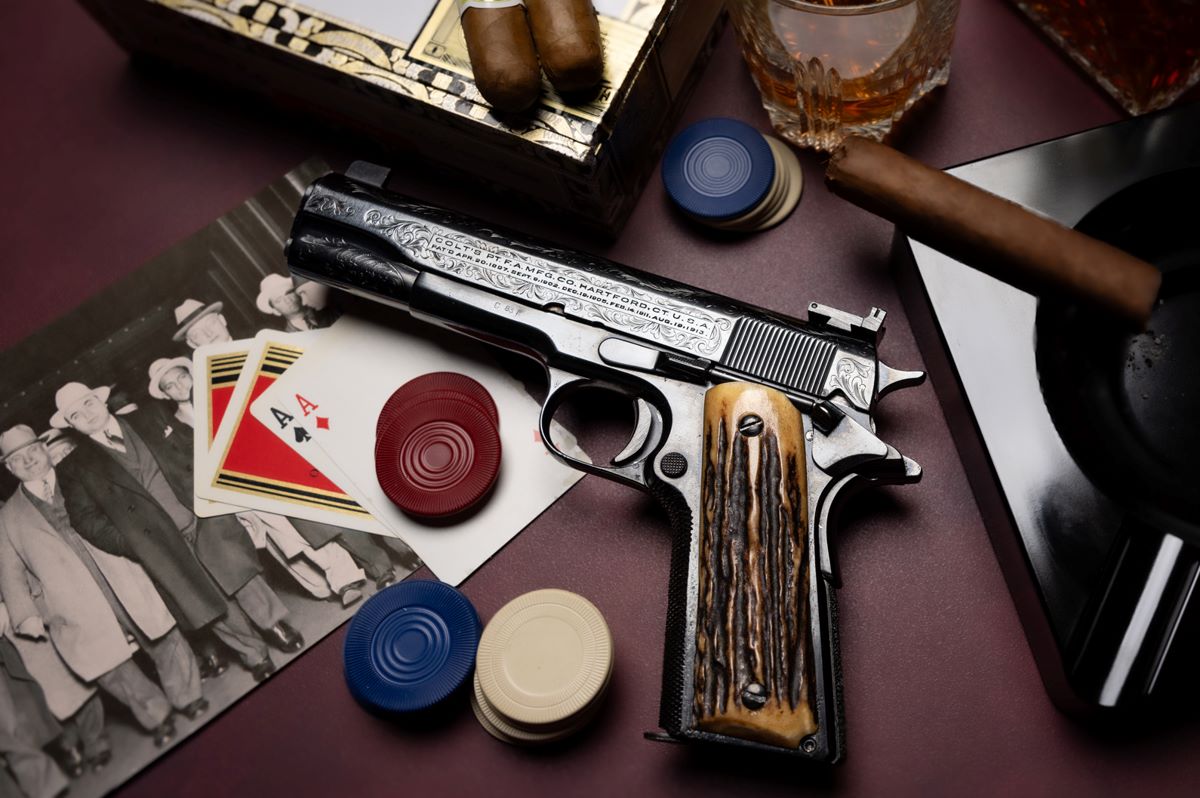
Ever wondered what treasures were hidden in Al Capone's estate? The notorious gangster, known for his reign during the Prohibition era, left behind a legacy that continues to intrigue many. Recently, an auction unveiled a collection of his personal items, offering a rare glimpse into his life beyond crime. From luxurious jewelry to handwritten letters, each piece tells a story of a man who was both feared and fascinating. This auction not only showcased Capone's wealth but also provided a unique opportunity to own a piece of history. Let's dive into 35 captivating facts about the Al Capone auction and uncover the secrets behind these extraordinary artifacts.
Key Takeaways:
- Al Capone's auction showcased his personal items, revealing his luxurious lifestyle and dangerous world. From guns to diaries, each item told a story of the notorious gangster's life.
- The auction provided a rare glimpse into Al Capone's personal life, offering a fascinating look at his opulent possessions and the softer side of the infamous figure.
Al Capone's Auction: A Glimpse into History
Al Capone, one of America's most notorious gangsters, left behind a legacy that continues to fascinate. His auction revealed many interesting facts about his life and times. Here are some of the most intriguing details.
-
Al Capone's personal items were auctioned off in Sacramento, California. The event took place in October 2021 and attracted significant attention from collectors and history enthusiasts.
-
The auction was organized by Capone's granddaughters. Diane, Barbara, and Theresa Capone decided to sell the items to share their family's history with the world.
-
Over 170 items were up for grabs. These included personal belongings, photographs, and even some of Capone's favorite possessions.
-
Capone's favorite gun was a highlight. A Colt .45 pistol, which he reportedly carried with him at all times, fetched a high price at the auction.
-
The gun sold for $860,000. This was one of the most expensive items in the auction, reflecting its historical significance.
-
Capone's diamond-studded watch was another prized item. The watch, which featured a diamond-encrusted face, sold for $84,375.
-
A platinum pocket watch also drew attention. This elegant timepiece, adorned with 90 single-cut diamonds, sold for $190,000.
-
Capone's family photos were part of the auction. These rare images provided a glimpse into his personal life, showing him with his wife and son.
-
A letter from Al Capone to his son was sold. Written from Alcatraz, the letter showed a softer side of the gangster, expressing his love and concern for his family.
-
The letter fetched $56,250. This piece of personal correspondence was highly valued by collectors.
-
Capone's monogrammed silverware was auctioned. The set included forks, knives, and spoons, all engraved with his initials.
-
The silverware set sold for $25,000. This everyday item provided a tangible connection to Capone's life.
-
A custom-made humidor was also available. Capone was known for his love of cigars, and this humidor was a testament to that.
-
The humidor sold for $120,000. It was one of the more unique items in the auction.
-
Capone's bed was another notable item. The bed, which he used during his time in Alcatraz, was a stark reminder of his imprisonment.
-
The bed sold for $40,000. This piece of furniture had a haunting history.
-
A painting of Capone was auctioned. The portrait, painted by an unknown artist, depicted the gangster in a contemplative pose.
-
The painting sold for $75,000. It was a striking piece of art that captured Capone's complex personality.
-
Capone's personal Bible was included. The Bible, which he reportedly read during his time in prison, was a poignant item.
-
The Bible sold for $57,500. It was a symbol of Capone's search for redemption.
-
A set of Capone's golf clubs was auctioned. The clubs, which he used during his leisure time, were a reminder of his love for the sport.
-
The golf clubs sold for $30,000. They were a popular item among sports enthusiasts.
-
Capone's custom-made suits were also available. These tailored outfits reflected his sense of style and sophistication.
-
The suits sold for $50,000. They were a testament to Capone's larger-than-life persona.
-
A pair of Capone's shoes was auctioned. The shoes, made from fine leather, were a symbol of his wealth and status.
-
The shoes sold for $20,000. They were a small but significant part of his wardrobe.
-
Capone's personal diary was included. The diary provided insights into his thoughts and daily activities.
-
The diary sold for $45,000. It was a valuable piece of history.
-
A set of Capone's cufflinks was auctioned. The cufflinks, made from gold and adorned with diamonds, were a symbol of his opulence.
-
The cufflinks sold for $35,000. They were a popular item among jewelry collectors.
-
Capone's personal ashtray was included. The ashtray, which he used for his cigars, was a simple yet significant item.
-
The ashtray sold for $15,000. It was a small but meaningful piece of his daily life.
-
A set of Capone's handwritten notes was auctioned. The notes provided a glimpse into his thoughts and plans.
-
The notes sold for $28,000. They were a valuable addition to the auction.
-
Capone's personal knife was included. The knife, which he reportedly carried for protection, was a reminder of his dangerous lifestyle.
The knife sold for $22,000. This item was a stark reminder of the violent world Capone inhabited.
Final Glimpse at Al Capone Auction
The Al Capone auction offered a rare peek into the life of one of history's most infamous figures. Items like his favorite gun, personal letters, and even his custom-made furniture were up for grabs. These artifacts not only fetched high prices but also told stories of Capone's life beyond crime. Collectors and history buffs alike found themselves drawn to the unique pieces, each holding a fragment of the past.
The auction wasn't just about the items; it was about connecting with a bygone era. Each piece served as a tangible link to the Prohibition era, offering insights into Capone's personality and lifestyle. Whether you're a history enthusiast or just curious, the Al Capone auction provided a fascinating look into the life of a man who continues to captivate the public imagination.
Frequently Asked Questions
Was this page helpful?
Our commitment to delivering trustworthy and engaging content is at the heart of what we do. Each fact on our site is contributed by real users like you, bringing a wealth of diverse insights and information. To ensure the highest standards of accuracy and reliability, our dedicated editors meticulously review each submission. This process guarantees that the facts we share are not only fascinating but also credible. Trust in our commitment to quality and authenticity as you explore and learn with us.


